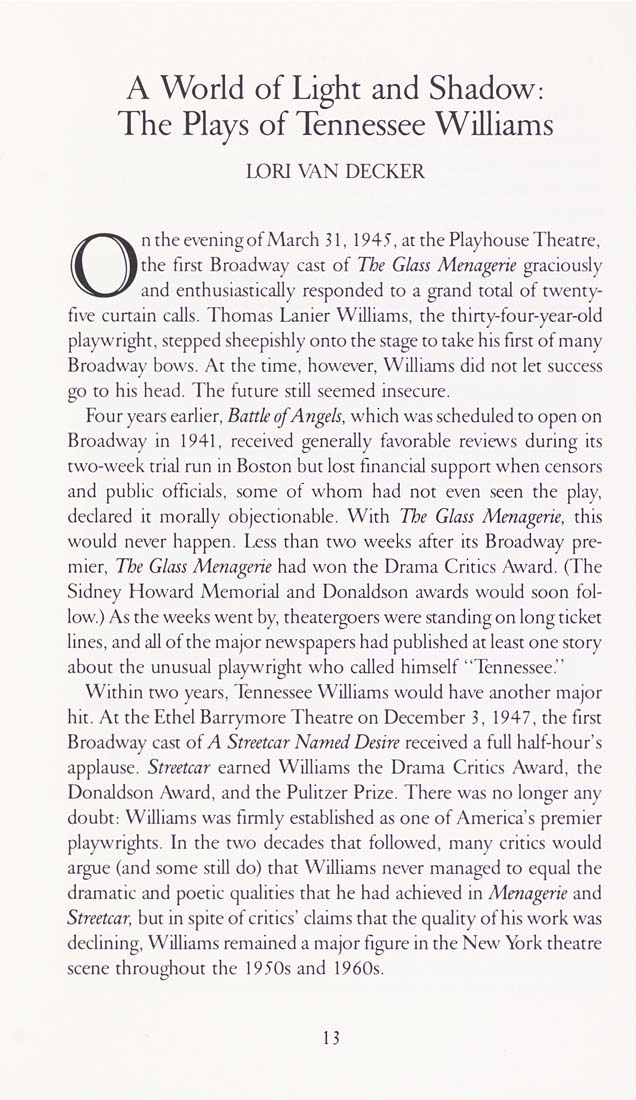Columbia Library columns (v.38(1988Nov-1989May))
(New York : Friends of the Columbia Libraries. )
|
||
|
|
|
|
| v.38,no.2(1989:Feb): Page 13 |

A World of Light and Shadow: The Plays of Tennessee Williams LORI VAN DECKER n the evening of March 31, 1945, at the Playhouse Theatre, I the first Broadway cast of The Glass Menagerie graciously and enthusiastically responded to a grand total of twenty- five curtain calls, Thomas Lanier Williams, the thirty-four-year-old playwright, stepped sheepishly onto the stage to take his first of many Broadway bows. At the time, however, Williams did not let success go to his head. The future still seemed insecure. Four years earlier. Battle of Angels, which was scheduled to open on Broadway in 1941, received generally favorable reviews during its two-week trial run in Boston but lost financial support when censors and public officials, some of whom had not even seen the play, declared it morally objectionable. With The Glass Menagerie, this would never happen. Less than two weeks after its Broadway pre¬ mier. The Glass Menagerie had won the Drama Critics Award. (The Sidney Howard Memorial and Donaldson awards would soon fol¬ low.) As the weeks went by, theatergoers were standing on long ticket lines, and all of the major newspapers had published at least one story about the unusual playwright who called himself "Tennessee." Within two years, Tennessee Williams would have another major hit. At the Ethel Barrymore Theatre on December 3, 1947, the first Broadway cast of A Streetcar Named Desire received a full half-hour's applause. Streetcar earned Williams the Drama Critics Award, the Donaldson Award, and the Pulitzer Prize. There was no longer any doubt; Williams was firmly established as one of America's premier playwrights. In the two decades that followed, many critics would argue (and some still do) that Williams never managed to equal the dramatic and poetic qualities that he had achieved in Menagerie and Streetcar, but in spite of critics' claims that the quality of his work was declining, Williams remained a major figure in the New York theatre scene throughout the 1950s and 1960s. 13 |
| v.38,no.2(1989:Feb): Page 13 |







